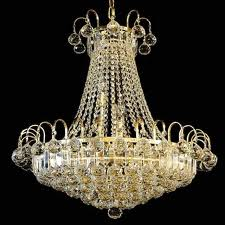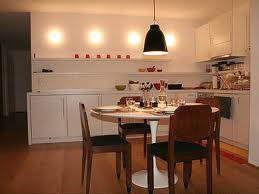Introduction
Functionalism reflects the desire of people to use something simpler though more functional. Changes brought into design with the Art Nouveau and Arts and Crafts movements can be still found in the dwellings of ordinary people, while individuals who value comfort and style select functionalist objects opposed to decorated units of furniture and clothes. Areas of application of functionalism are diverse starting with utensils and continuing with the design of buildings and cities. Functional though attractive, comfortable though sell designed, useful though appealing – this is the functionalism in different areas of its implementation.
Simple Lights and Decorative Chandelier
Functionalism affected all areas of human life including the home and home appliances such as lights and utensils. As such, a decorative crystal chandelier may be contrasted to the simple lights used in modern dwellings. Advantages of more functional models are apparent because they enable people to use a unit without paying too much attention to its outer look or its decorative components. The main function of the simple light is making space lighter.
The decorative crystal chandelier would also make space lighter but it would cost more, take more time and effort for its maintenance and repair. The inventor of the decorative chandelier takes a more aesthetic approach, creating a unit that has the same function as the more functionalist lamp, but adding more pompous and luxurious elements thereby making it an indicator of class and income level. People with lower incomes can strive to purchase decorative objects to make their dwellings look like those of rich people.
It is not surprising that luxury remains the limiting component for social class and income level making clear distinctions between people who can and those who cannot afford a decorative unit. Nevertheless, “cultural evolution is synonymous with the removal of ornament from articles in daily use.” This means that decorative elements may be considered outdated in modern design.
Why people used decorative units? The use of decorative components was treated as the reflection of good taste; decorative elements were widely used and are still used to create the illusion of comfort. However, the concept of comfort is different for all people and one individual may consider simple lights at home as something that is used for illuminating the space at home. Simple lights can be either extremely simple in design and contribute greatly to the functional approach taken in the entire area. At the same time, simple lights may be used as points on the wall that illuminate some area of the house; in this case, they should not necessarily be designed in some extravagant way because no one would notice this.
The crystal chandelier is the unit that may be treated as the luxury component of the daily life. However, it is not as important as the light itself. As such, it is necessary to follow advice of Dieter Rams and “omit the unimportant in order to emphasize the important.” If we eliminate the unimportant elements from the crystal chandelier, only the light bulb would remain. Is the bulb an important element that should be left? Not the bulb but the light produced with the help of the light bulb should be used in functionalism.
In some cases, simple lights are better because of their functional value whereas other cases require more elegant and luxurious means of lighting. For instance, an opera house would look dull, poor, and pathetic using simple lights instead of decorative crystal chandeliers. At the same time, a house should not be lighted with a decorative luxurious chandelier for its inhabitants to feel more comfort. As such, the difference of the less and more functional variants of the same object lies in the area of application and appropriateness.
Unimportant and important elements are effectively combined in contemporary design becoming trends for international designers that work on structures and shapes of buildings and cities. As such, there is nothing harmful in using non-functional design if a person likes it though this should be considered a matter of taste and waste. Environmentalists claim that people produce more waste than can be potentially recycled on this planet. In this respect, we produce units that have no functional predestination though have environmental danger because their maintenance and repairing cost a lot as well as recycling. If people can avoid using non-functional units, they should do that due to common sense. Movements can change, pass, and emerge, whereas simplicity is the general idea that is taken as the basis of functionalism and brought to the level of comfort, utilizing, and enjoying it. Important is what we use while unimportant can be easily eliminated.
Conclusion

Simplicity and functionalism can be considered synonymous concepts because they both contribute to understanding of the new lifestyle without excessive decorative components such as a crystal chandelier. Simple lights used at home can now be seen in every house and apartment while this also is treated as a fashion trend. On the contrary, while taking a historic approach, it is possible to see how decorative components helped to make distinctions between classes and income levels in society being objects to strive for by people of lower income levels than those who could easily afford such a crystal decorative chandelier.

Reference List
Loos, A. 1908. Ornament and crime. In Adolf Loos, 1870-1933: architect, cultural critic, dandy, ed. A. Sarnitz. 2003, 84-89. Vienna: Taschen.
Rams, D. 1989. Omit the unimportant. In Design discourse: history, theory, criticism, ed. V. Margolin. 1989, 111-113. Chicago: University of Chicago Press.